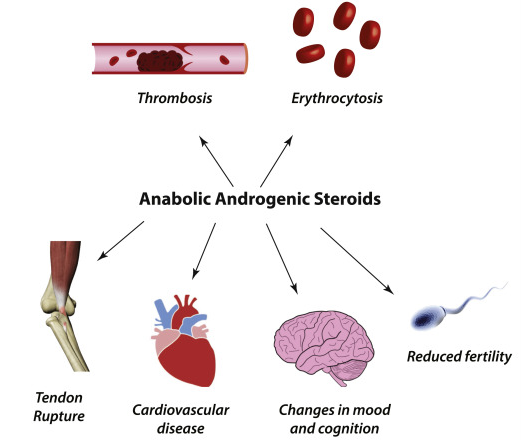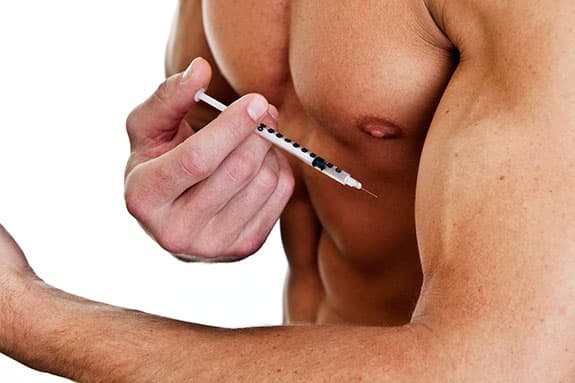Don't miss our holiday offer - up to 50% OFF!

5 Myths Debunked: The Truth About Anabolic Steroids and their Societal Reach
Have you ever wondered what fuels muscle growth? Or perhaps you’ve heard whispers about performance-enhancing drugs in the world of sports. In both cases, you might have encountered the term “anabolic steroids.” But what exactly are they, and how do they work? This article takes a deep dive into the science behind anabolic steroids, exploring their natural and synthetic forms, their uses, and the potential risks associated with misuse.
The Wondrous World of Steroids: A Family of Molecules
Steroids are a fascinating class of naturally occurring terpenoid lipids found throughout the living world. This means they share a common building block with other essential molecules like vitamins and pigments, and they play a crucial role in the structure and function of cells in animals, plants, and fungi. Within this broad category, there are many different types, each with its own specific function. Here’s a breakdown of some key classifications:
- Animal steroids: These include the various steroid hormones found in vertebrates and invertebrates, with anabolic steroids being a prominent example in humans.
- Insect steroids: A specific type of animal steroid known as ecdysteroids plays a vital role in insect growth and development.
- Plant steroids: Also known as phytosterols, these plant-based steroids offer various health benefits and can even mimic the effects of cholesterol in the human body.
- Fungus steroids: These less-studied steroids are found in fungi and may have roles in fungal growth and reproduction.
Focusing on Humans: A Breakdown of Steroid Hormones
Steroids play a crucial role in various functions in the human body. Here’s a breakdown of the three main types:
- Sex steroids: These are essential for reproduction and development of sex characteristics. Examples include estrogen, progesterone, and testosterone.
- Corticosteroids: These hormones help regulate metabolism, inflammation, and immune function.
- Anabolic steroids: These are the stars of our show today. Let’s delve deeper!
Anabolic Steroids: Building Blocks for Growth
Anabolic steroids are naturally produced in the body. They play a crucial role in:
- Muscle growth and development: Anabolic steroids promote protein synthesis, the process by which cells build muscle tissue.
- Bone growth: They contribute to bone health and density.
- Male puberty: Testosterone, a primary anabolic steroid, is crucial for the development of male sexual characteristics.
Synthetic Anabolic Steroids: A Double-Edged Sword
While our bodies produce anabolic steroids naturally, scientists have also developed synthetic versions. These synthetic versions, also known as anabolic-androgenic steroids (AAS), mimic the effects of testosterone, the primary male sex hormone. Testosterone itself is a naturally occurring anabolic steroid responsible for many functions in the body, including muscle growth, bone health, and sexual characteristics.
Synthetic AAS and Medical Uses
These synthetic versions of testosterone, acting as anabolic-androgenic steroids (AAS), can be prescribed by doctors for various medical conditions:
- Muscle wasting diseases: Diseases like AIDS or cancer can lead to significant muscle loss. Doctors may prescribe AAS to help rebuild muscle mass and improve strength in such cases.
- Bone disorders: Conditions like osteoporosis weaken bones. AAS can be used to promote bone growth and increase bone density.
- Delayed puberty: In some cases where a male experiences a delay in puberty, doctors may prescribe a controlled dose of AAS to stimulate testosterone production and normal pubertal development.
It’s important to remember that these prescriptions are carefully monitored by doctors to ensure safe and effective use.
Risks of Anabolic Steroid Abuse

Unfortunately, the muscle-building properties of anabolic steroids have also attracted attention in the realm of sports and bodybuilding. Athletes and bodybuilders sometimes misuse these substances to gain a competitive edge or achieve a more defined physique. This is considered doping and comes with serious health risks associated with excessive and long-term use of anabolic steroids. Some of the potential side effects include:
- Cholesterol Imbalance: Anabolic steroids can cause adverse changes in cholesterol levels. They often lead to an increase in LDL (Low Density Lipoprotein), the “bad” cholesterol, and a decrease in HDL (High Density Lipoprotein), the “good” cholesterol. This imbalance significantly increases the risk of heart disease and stroke.
- Severe Acne: Anabolic steroid use can trigger severe acne breakouts, especially on the face, back, and shoulders. This can be a persistent and embarrassing side effect.
- High Blood Pressure (Hypertension): Steroids can put a strain on the cardiovascular system, leading to an increase in blood pressure. This can damage the heart and blood vessels over time.
- Liver Damage: The liver is responsible for processing and removing toxins from the body. Excessive steroid use can overload the liver, leading to potential scarring and dysfunction.
- Heart Problems: Anabolic steroids can cause deadly changes in the structure of the left ventricle, the main pumping chamber of the heart. This can weaken the heart and increase the risk of heart attack and sudden cardiac death.
The Bottom Line: Weighing the Risks and Rewards
Anabolic steroids, both natural and synthetic, play important roles in the body. However, it’s crucial to understand the potential risks associated with their misuse. If you’re considering using anabolic steroids, it’s essential to consult a doctor to discuss the potential benefits and risks in the context of your specific situation.

